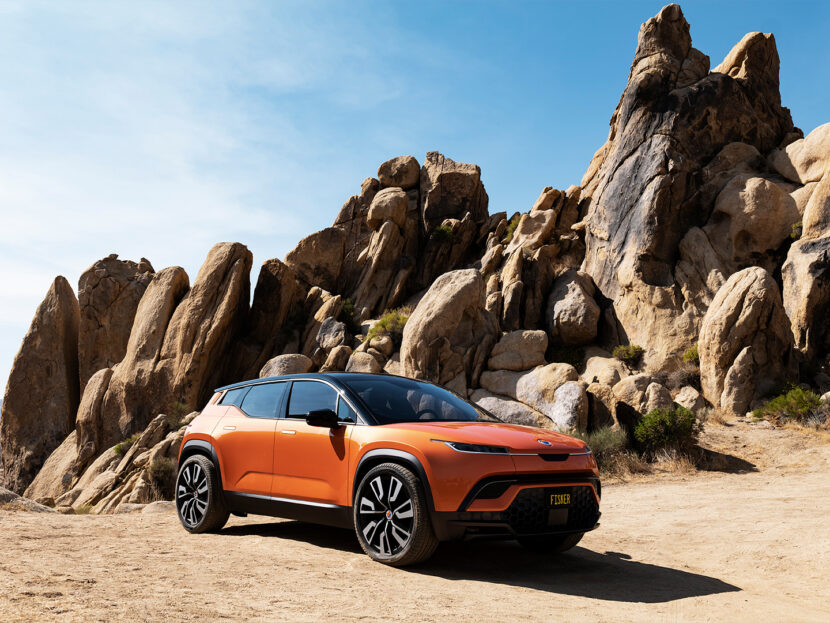Automakers, battery developers, and tech companies have been trying to figure out faster ways to charge EVs for decades. One of the ideas that circulates every once in awhile is battery swapping, which would literally swap out a flat battery for a fully charged out, rather than plugging the car in to charge. Nio, the Chinese EV maker, has battery swap stations that can supposedly switch batteries in three minutes, making it as convenient as pumping gas. However, there may be another name in the game a year from now, as Henrik Fisker claims his upcoming Fisker Ocean EV SUV will have swappable batteries by Q1 2024.
It’s hard to imagine a car company as small and unproven as Fisker—who hasn’t delivered a single vehicle yet—developing swappable battery technology that the automaker giants haven’t been able to. However, Fisker isn’t doing it alone. It’s partnered with Ample, the California-based tech company who’s been working on battery swapping tech.
“Ample’s technology makes it possible to rapidly deploy EV infrastructure so that Fisker can make its vehicles available to larger markets on a faster timetable,” said Fisker.
What makes Ample’s battery swapping technology so attractive is its lack of infrastructure changes. The Ample battery swapping station is said to only be the size of two U.S. parking spaces and require no construction. Which means they can be plopped down almost anywhere. According to Ample, every battery swap is as fast and as cheap as filling up the average internal combustion car’s gas tank.
The way it works is that the car pulls up to a spot, wheel chocks lock the car’s wheels in place on individual lifts, which raise the car up. The a robotic tray moves under the car, unbolts the existing battery pack, drops it down, and brings it to the station for charging. Then the tray brings a new battery pack to the car and bolts it in place. In theory, it sounds great. However, in practice, there’s worry about the reliability of such a high-tech operation, as well as what happens when the station runs out of fully-charged batteries. If it works, and works well enough, though, this does sound like a good solution.
At first, Fisker claims this technology is more for fleet operations, who need to switch from internal combustion to electrification without any economical compromises. If the tech proves useful, though, it could move to more mainstream customers.
Of course, more and more car companies would have to work with Ample, to design battery trays that can come out easily and are compatible with Ample’s stations. But if a brand like Fisker can open the door, other brands like BMW, Mercedes, GM, Audi, Volkswagen, and Ford could follow suit. If battery swapping technology does prove to be the future of long distance EV travel, the charging infrastructure becomes far less necessary.
[Source: Car Scoops]

